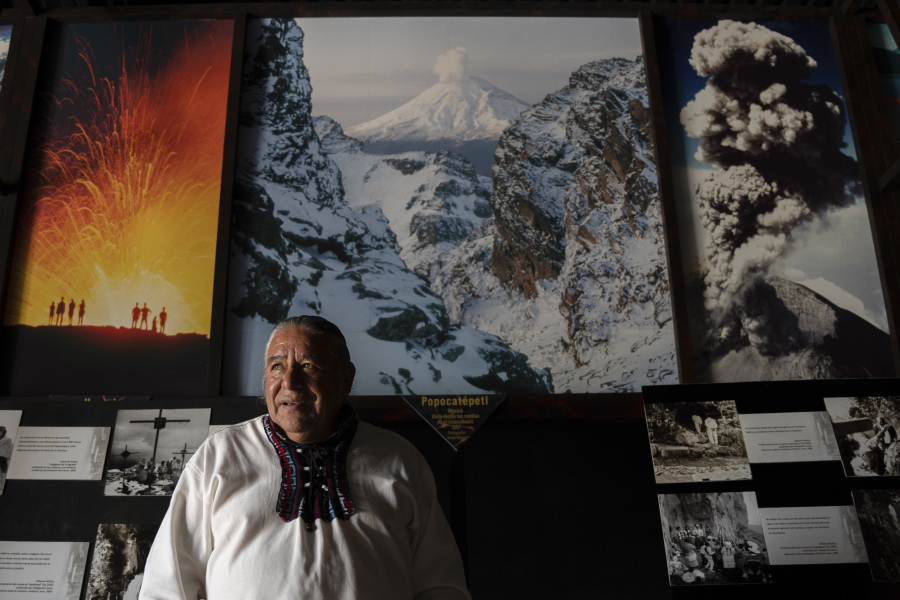AMECAMECA, Mexico — Moisés Vega has a distinctive job: The 64-year-old Mexican says he can speak the sacred language of volcanoes to ask for good weather and a good crop.
Mexico lowered the alert level on the Popocatépetl volcano by early June after its eruptions of gas and ash had drawn international attention. For Vega, though, the 17,797-foot mountain, known as El Popo, is a living being that never fades from his sight.
“The Popocatépetl is our father and the Iztaccíhuatl is our mother,” he said, referring to a neighboring volcano. “They are providers of water and we are not afraid of them. On the contrary, their exhalations are blessings because they give us life.”
There is no English translation for his profession, but among the inhabitants of the towns of central Mexico, men like him are called “graniceros.”
“Their work is based on the pre-Hispanic notion of conciliation with nature,” said archaeologist Arturo Montero, from the University of Tepeyac. “They are regulators of the weather who believe that the mountains are spirits of nature.”
It’s unknown how many “graniceros” are in Mexico. Vega says that in Amecameca, the city where he lives 44 miles southeast of Mexico City, there are only four (himself included). He estimates that there could be a similar number in nearby towns.
Many locals believe that only men who are struck by lightning and survive — Vega among them — are the ones who can claim the job.
“I knew I would become a ‘granicero’ since I was a boy,” Vega said. He was ordained to fill that role in a ritual in 1998.
His main task is to perform rituals three times per year to ask the volcanoes for good weather; just the right amount of rain needed for the crops. He mostly leads these ceremonies in stone shrines built by the locals in “El Popo” or “El Izta,”
He also works as a traditional healer and makes additional income explaining El Popo’s story to tourists visiting a volcano museum in Amecameca.
Montero said it’s not easy for contemporary “graniceros” to remain well-versed in ancient knowledge, given that many have to take a variety of jobs to get by. But they want to preserve their ancestral legacy and responding to inquiries from anthropologists, journalists and tourists helps them do that, he said.
On a recent Sunday, Vega pointed to a replica of a shrine built to show visitors what real temples devoted to volcanoes look like. He said the rituals he performs are a fusion of pre-Hispanic and Christian elements. In addition to flowers and fruits, shrines have crosses, but not crucifixes. They are painted in blue, to represent the sky, or white, to emulate clouds.
“I respect the (Catholic) religion because we grew up in this place, but the mountain speaks to us in the words of our grandparents, not in the words of the conquerors,” he said in reference to the evangelization led by the Spaniards after 1521.
The roar of “El Popo” tells him that something is wrong. Someone may have climbed its slopes to perform an animal sacrifice, which is against the community’s beliefs. A thief may have stolen the crosses from their sacred spots. A group of drunken men may have profaned its soil.
Alcohol is forbidden in the volcanoes, Vega said, because spirits can get drunk and interfere with the weather. This could lead to a catastrophe, he said, as bad weather can destroy the crops and leave people hungry.



